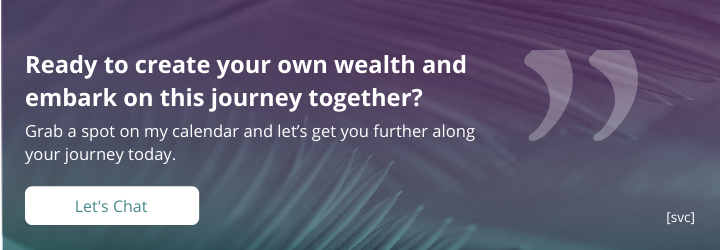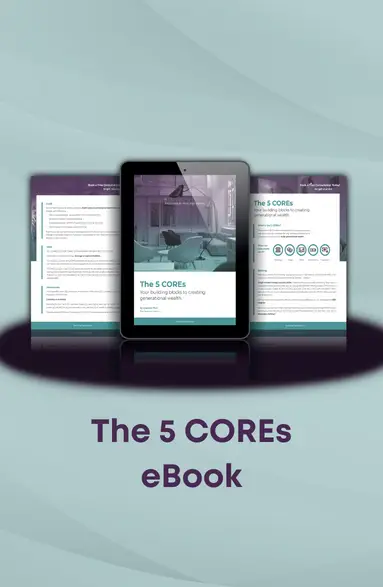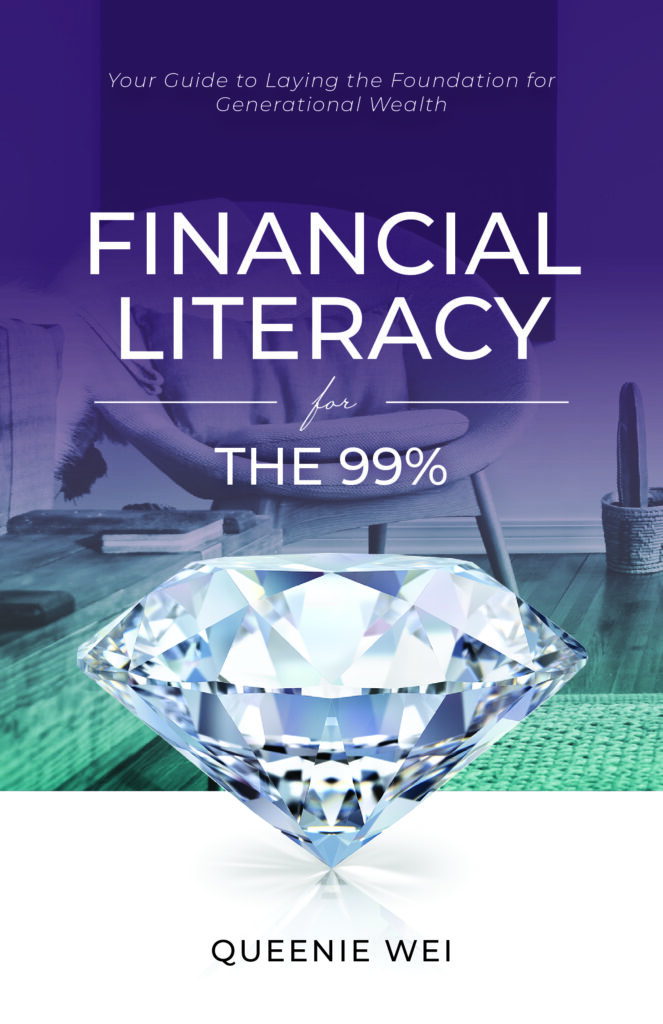Too many people want to invest but have no idea why. They think it’s the way to make money, but if you’re blindly going into the stock market or relying solely on the opinion of others without doing your own research, you will lose – badly.
How do you know when you’re ready to invest?
I’ve talked to students who shared with me that they picked up day trading because they thought it was going to be easy and simple. Needless to say, they all lost all their money. We’ve interviewed team members who are close to retirement and looking for jobs because they lost too much money from day trading.
I’m not saying investing is super hard but trading IS gambling. And no matter how much you’ve studied the game, gambling is still gambling. But for any traders reading this, you know the game isn’t about how much you make. It’s about how much you can minimize your losses to stay ahead of the game.
I don’t care HOW MUCH you’ve done your research. NO ONE (including Warren Buffet) knows what’s going to happen in the stock market. Unless you’re working on insider information, which is illegal.
By no means am I discouraging trading, it’s a great tool to leverage if you want to increase your capital but you have to know the basics.
There are different ways of investing and different types of investing which makes sense why it all seems so confusing as well as contradicting information when you’ve never entered the stock market. The reason there’s so much contradiction is because the strategies that work for day trading are not the same you would use for long term value investing.
Unless you have risk capital (money you can afford to lose), your best bet is to start by educating yourself. But even that’s a drag because there’s just SOO MUCH information out there.
Don’t worry, I got you. We’ll get into some basics that will provide you with a direction of WHERE to look – and that’s a great start to investing.
Remove the jargon and put your focus here instead.

Rule #1 investing with Phil Town.
That’s where I started my journey. The man himself is incredible but it was the extended teachings he brought from Warren Buffet and Charlie Munger that tied it all nicely together in a bow for me. And in this blog, I’ll add on to it with my own opinions to better guide you.
One of the first things I learned is that the financial world intentionally uses jargon to confuse you. Don’t believe me? Remember a time when you tried to get some assistance from your bank’s financial advisor and a simple question is often met with some form of jargon to either confuse you or keep you in the dark? I know this doesn’t apply to all experiences and advisers but sadly, it happens more often than not.
This is because most financial advisors sell you products which they get commission for. I have nothing against financial advisors, in fact I think everyone should have one for their own financial team BUT there’s a difference between going to your financial advisor with some basic financial literacy versus going in blindly and taking any recommendations that they make for you.
The first financial advisor I got praised mutual funds and got me to invest with them. Little did I know that after fees and inflation, my “mutual funds” would’ve basically been my savings.
…Not exactly what I was hoping for at 19.
So, remove the jargon and focus instead on your why. Go for the clarity.
WHY do you want to invest? Is it simply to make money, to combat inflation, or because you’re interested in how the stock market works? We want to say we “invest” like it’s something that sounds cool but if you’re not clear with why you’re even going into the market in the first place, there’s likely a chance you won’t get very far. Or worse, be disappointed with what you have.
Having clarity allows you to focus. You won’t know where to focus if you don’t have clarity. So ask yourself, how will investing help you achieve your x, y, or z goal? Investing for the sake of investing is NOT a goal.
In our process at Soul Vibe Capital, we move you through the 4 main pillars. Clarity → Focus → Efficiency → Results
Choosing what to invest in
Think of investing like voting with your money. Now that you’ve got some clarity on what your actual goal is, let’s look at how you can get there. Before you get into what types of stocks, bonds, cryptocurrencies you want to invest in, ask yourself HOW you want to invest. The simplest is short term or long term gains. The reason I suggest starting with that question is because the strategies for short term vs long term are VERY different.
PS – this book is not an investment guide, but rather a guide to get you thinking in the right direction for yourself and knowing where to look next. (always have to cover your legal basis.)
One of the key differences between short term and long term is that short term generally means more risk, so you may or may not recover your money in time. Remember how I said trading is gambling? Most short term investments are a gamble. However, I know people who do extremely well in their craft.
Long term investments are likely a bit less risky but you won’t reap the rewards until later down the road. I know for me when I first started my journey, I always wanted the short term rewards. The problem? I didn’t have enough capital or money on hand to make any sort of investments. My mere $30 isn’t enough to day trade.
So the next thing to look at is: how much money do I have to fund my investments? I know gurus tell you to save every penny and to invest it. But if you don’t know what to invest in, it doesn’t really make sense to throw money at the wall does it?
Some basic starting points to do your research include index funds, ETFs (Exchange traded funds), mutual funds, bonds, and of course stocks. But in today’s age, there’s also forex and cryptocurrencies.
If you’re ready to invest, seek out a registered advisor to help you do so. If you’re wanting more clarity to help you get started, book a call with me and we’ll help you lay the foundation before you start using your hard earned money in the market.
When should I start investing?
Depends on what your goals are., but if you know you want to invest, say to beat inflation, then now would be the best time since yesterday would’ve been the most optimal.
There seems to be FOMO (fear of missing out) when it comes to investing. And although there are moments that are better to get in than others such as a margin of safety price, it doesn’t have that much of an effect as you think. (Unless you’re hoarding several millions of dollars, which then I’m not sure why you needed this book – but hey, thanks for the read.)
We think we’re missing out because we didn’t get in on Tesla or Amazon stock, but if you have no prior interest or understanding of that industry, consider that it actually might not be in your best interest to put your money in something that you don’t understand.
In terms of value investing, apart from buying at a discounted price that you’ve calculated, it doesn’t actually matter when you invest because the principle is you’ll love a “dip” in the market because you get to load up on more of your favorite stocks.
With the tech we have – apps like Robinhood, WealthSimple, or Stockpile where you can start with as low as $1, investing is more accessible than ever. While some of you may think that starting with $1 is pointless because you won’t get very far, I’d challenge your way of thinking. Starting with a dollar could actually help you practice your skills and get comfortable with trading/investing.
Think of it as spending $50-$100 for a practice lesson, with a chance that you might make some money! Don’t forget the value of a dollar, or you’ll never appreciate a million. Would you rather practice with less of a downside? There are also paper trading (with fake money) that offers the same type of practice, where you actually go into the apps and make a trade yourself so you get a feel for it.
I mean you’d spend $30 dollars on a gaming keyboard or going out for dinner but don’t want to take the risk to practice in something that you say you want to do? Mhmmm, see the irony there?
The only thing stopping you from taking action is you. Also, please don’t spend your rent money to practice trading either. But if you truly want to get your feet wet, then get your feet wet and stop talking about it!
The logistics of investing.

I was stuck for years because I was scared to pull the trigger. What type of account do I need? What are the tax implications? Where do I go to invest? URGH!!!
Honestly, if you feel or felt any of the emotions above, you’re not alone. When it comes to money we all feel some type of fear when it comes to investments. I’m not talking about investing in the stock market but when you make a big purchase.
Last year, we spent over $106,000 on development with coaches and other programs to help us grow. We were scared, we went into debt, but we KNEW we wanted to grow and get ahead of where we were. But the fear was always there. With stock market investing, it’s no different.
Where to start investing
I’m going to give you the simplified version of how to start. First, if you’re Canadian starting out a TFSA is your best bet. If you don’t have one, GET ONE! And if you do, try to max out your limit (the amount of money you can put into it) as one of your financial goals. Apart from it being a relatively safe place to invest from, it’s a great asset to have in your portfolio. For our US friends, that’s the equivalent to your ROTH IRA for the same tax benefits.
Now one thing to note: If you trade in US stocks in your TFSA, you’ll get taxed. Any Canadian stocks and you’re fine. Which brings me to taxes…
By no means am I a tax expert, but I’m writing this to help you get started. And unless you have hundreds of thousands of dollars, you can AFFORD to pay taxes on the earnings that you might have. A bonus is that any taxes you do pay on your investments are known as capital gains, which are taxed less than your job. Unless you’re making mad money moves, you can afford to pay taxes on $500. I know taxes seem like a big thing, but unless you’re dealing with more money, it honestly does not make that much of a difference.
I say this with all the empathy in the world because I was stuck here for years because I was sooo scared of getting an enormous tax bill when I didn’t even have $1,000 to begin with. It was silly, I know. We all make mistakes.
So now that you know which account you’re going to start with and taxes are out of the way, the next thing to look at is to find a brokerage where you can actually buy and sell stocks. Luckily at the time of this book (2021), we have many apps that make it so much easier for us to invest than we did 10 years ago.
A few user friendly apps are:
- WealthSimple
- Robinhood
- Stockpile
- Questrade
- TD Ameritrade
- Interactive Brokers
My suggestion is to review some YouTube videos and download some of these apps to see which you prefer. Again, this is for you to practice. Once you’re familiar with trading and the concepts, I would suggest moving your assets to a more established brokerage such as Questrade, Interactive Brokers, TD Ameritrade, etc.
Also for simplicity, here are the brokers by country that I find are great to start.
- US: Robinhood, Stockpile, TD Ameritrade, Interactive Brokers
- Canada: WealthSimple, Questrade, Interactive Brokers
Lastly, you simply go and sign up an account for yourself.
I know there are many areas that we didn’t cover but ask yourself, do you need ALL the information to get started? And even if you had all the information, would you sit there and review or simply start? What I’ve shared in this blog/chapter is only a glimpse into investing, but my intention is to give you permission to start!
Even if you make mistakes, spending $50-$100 to test and try something new will do wonders for your fear. It is scary to invest your hard earned money, but the truth is you have to start somewhere.
So, give yourself permission to start and go have fun!







